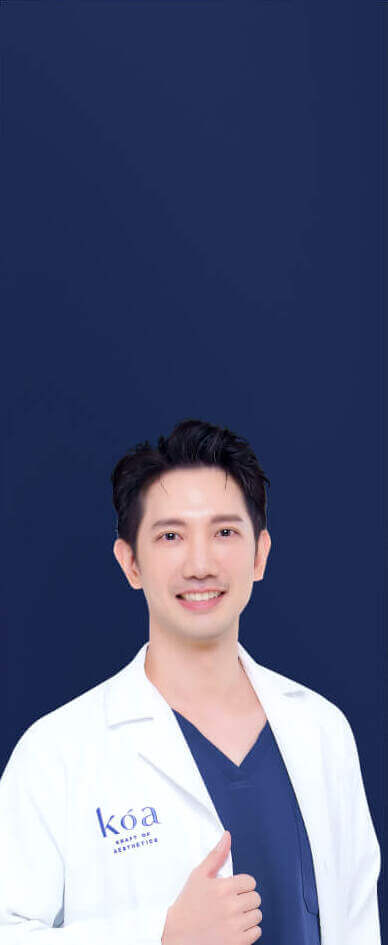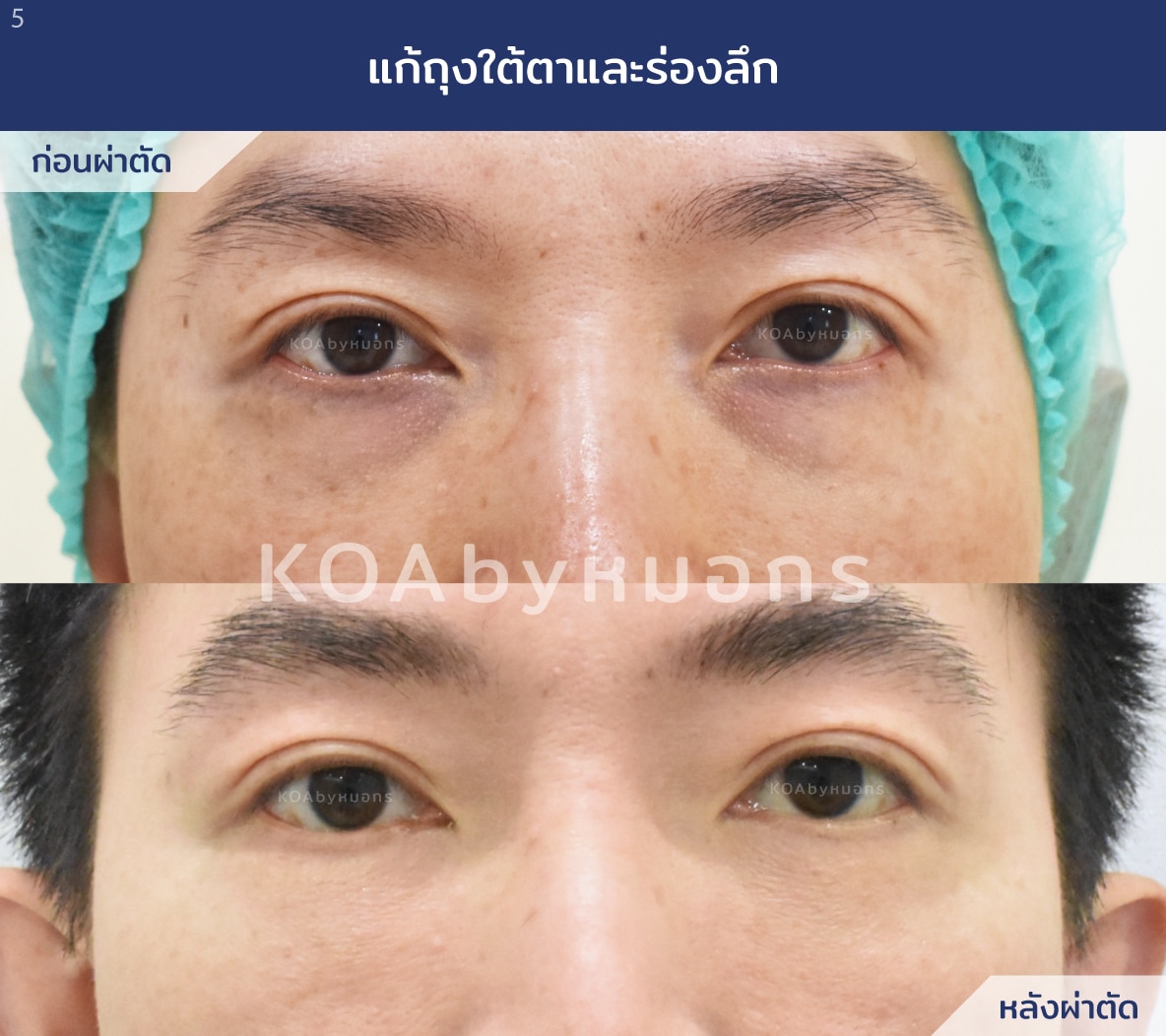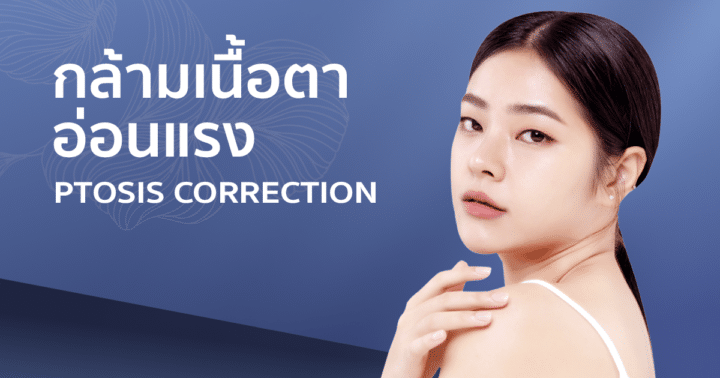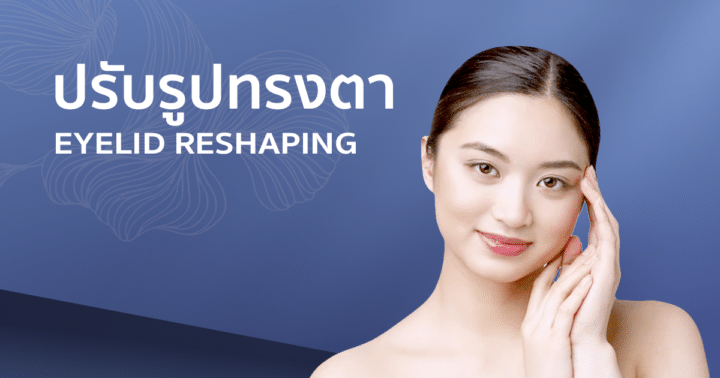

Bag Under Eyes Correction
Bag Under Eyes and Fat Repositioning Surgery
Although surgical excision of under-eye bags is an excellent choice for removing fatty tissue and potentially reducing the size of the bags, it also causes a deeper tear trough and groove under the eyes.
At KOA Clinic, we use a technique known as ” Under-Eye Fat Repositioning” to revamp the bags under the eyes, which helps soften the lower eyelid and repair tear troughs and deep grooves under the eyes.
It’s similar to treating tear troughs and under-eye bags simultaneously.
Why do you have to choose “Under-Eye Fat Repositioning” at KOA Clinic?
- Rearrange under-eye bags rather than remove them to make under eyes look more fuller and smoother than traditional technique.
- Both approach technique ; internal and external; are optional in every people.
- Aging people also undergo Under-Eye Fat Repositioning
- Lower eyelid tightening surgery could be addressed in people with severe laxity for better result.
2 Surgical techniques for Under-Eye Fat Repositioning at KOA Clinic
1. Internal approach
- Instill topical anesthetic eyedrops
- Flip eyelids inside-out to approach and avoid visible surgical scars
- Reposition under-eye fat to decrease bulges and deep grooves.
- Use absorbable sutures to close the wound from the inside.
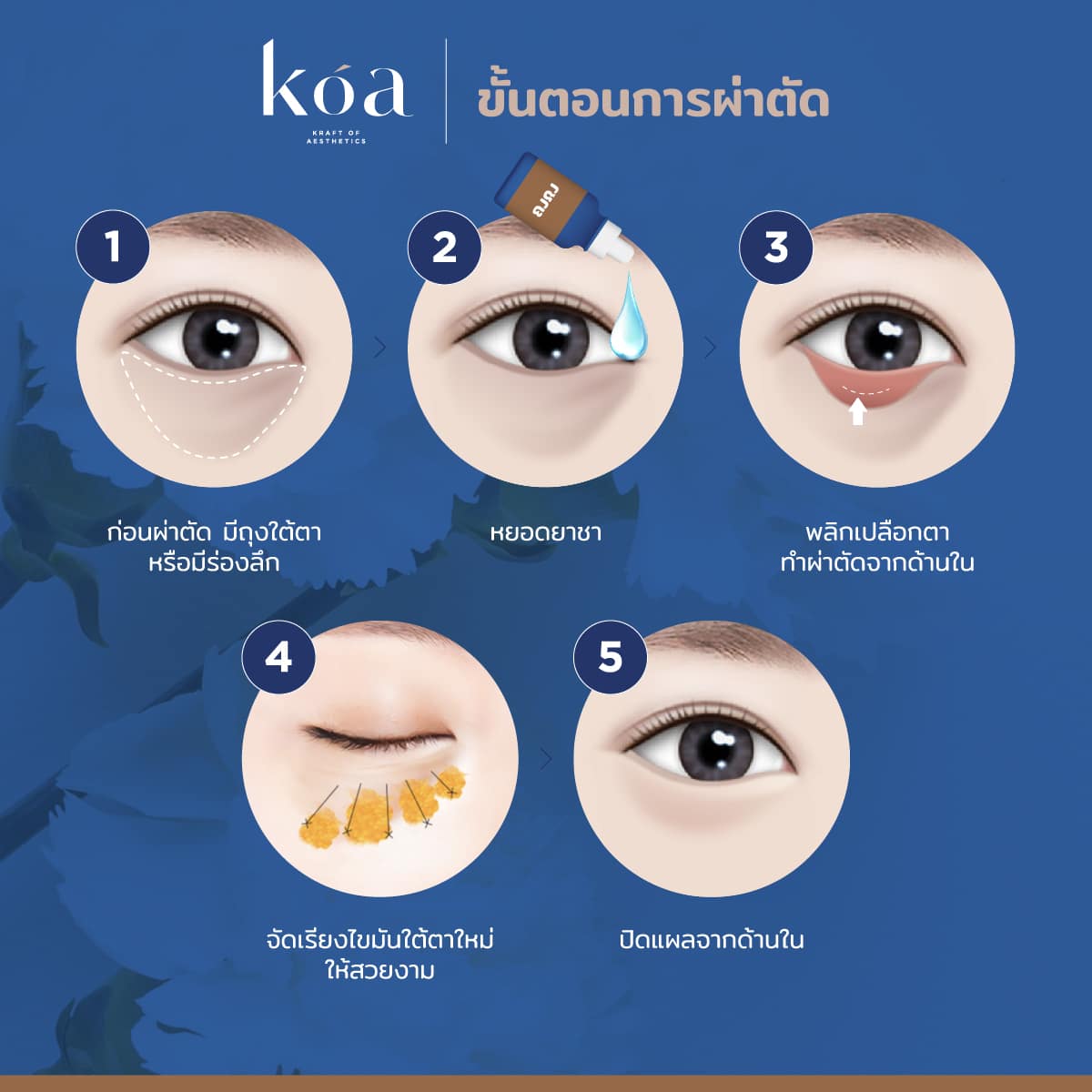
2.External approach
- Inject local anesthesia to the lower eyelid.
- Make an incision along the edge of the lower eyelid to conceal the scar.
- Trim off some extra fat and reposition the remaining fat as appropriate.
- Cut off extra skin
- Close the surgical site with non-absorbable sutures.
- Lower eyelid ligament strengthening may be necessary in cases of severe lower eyelid laxity to avoid complications.
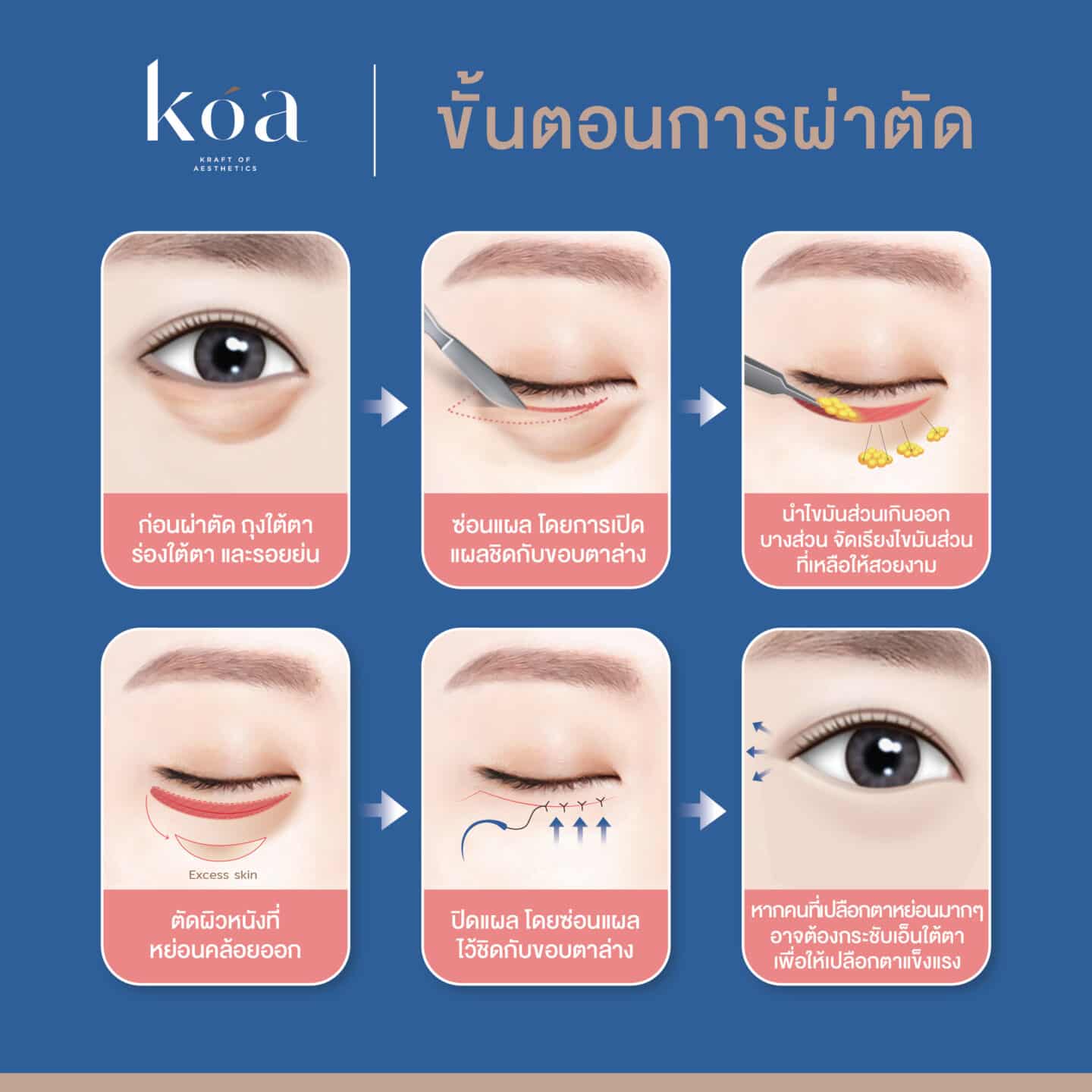
Comparison table for Under-Eye Fat Repositioning : External vs Internal approach
| Surgical method | Internal approach | External approach |
| Age | 18 – 30 years old | Higher than 30 years old |
| Duration | 60 mins | 90 mins |
| Anesthesia | Ophthalmic and local anesthesia | Local anesthesia |
| Surgical suture removal | None | 7 days |
| Recovery period (swelling period) | 2-3 days | 7 days |
| Postoperative Care |
|
|
| Suitable for |
|
|
| Not suitable for |
|
1. People who have allergies and cannot control their symptoms well. |
Under-Eye Fat Repositioning Before/After Review
FAQ about “Under-Eye Fat Repositioning”
-
The traditional technique is to remove bags under eyes, which tends to make the under-eye area look deep and lack of fullness. At KOA Clinic, we use fat reposition technique to smoothen the under-eye area and correct deep tear trough at the same time.
-
Yes, it is possible, but we do not recommend because people over 30-35 years of age often have problems with sagging lower eyelid skin or deterioration of the ligaments under the eyes(laxity). It is more appropriate to use the external technique. However, you can consult with our doctor for further advice.
-
Absolutely and we recommend adding fat injection to volumize your lower eyelid.
Read more: Fat injection
-
It can happen, but only slightly. After surgery, you will have tape placed under your lower eyelid to reduce swelling and bruising for up to 1 week.
-
The result after surgery should be ok for long period, however it might be shorter in aging patients or some conditions such as uncontrolled allergy or heavy smoker.
-
Yes, but we recommend to consult with doctor for evaluation.
-
We recommend reducing the screen time during the first week post operative period and frequently use artificial tears to prevent dry eyes.
-
The scar is close to the lower eyelid margin which is difficult to notice and it will be gradually gone within 4 – 6 months.
-
You could make up in other area except lower eyelid after 1 week post operation and 2 weeks at lower eyelid area.
-
Under-Eye Fat Repositioning is less painful and we also provide appropriate pain control and anesthesia.
Related services
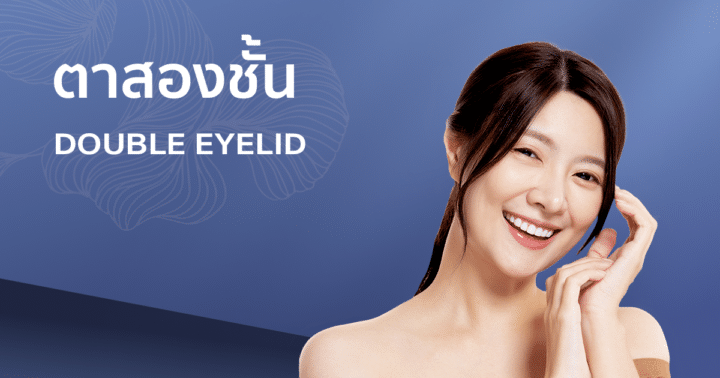
Double Eyelid
